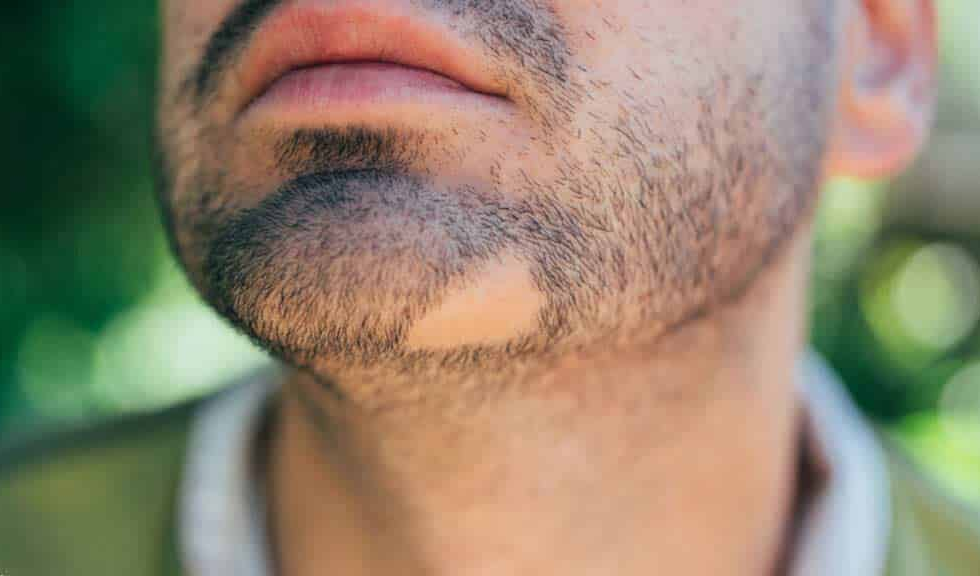Beards are no longer just a fleeting trend—they’ve become a lasting fashion statement! There’s something empowering about sporting a well-defined, full beard. But what if your beard isn’t cooperating? If you notice patchy areas or thinning spots, it can be frustrating. Various factors could be responsible for these gaps, including natural hair sparsity, alopecia areata (also known as spot baldness), or, in some rare cases, fungal or bacterial infections. But the question remains—what can you do when you see gaps in your beard? Are there effective treatments, and if so, do they work?
Let’s explore !
Why Does My Beard Have Bald Patches?
The most common causes of bald patches or gaps in your beard include :
Alopecia Areata: This autoimmune condition can cause bald patches in your beard, similar to the ones seen on the scalp.
Natural Sparsity: Just like the hair on your head or body, beard hair growth can vary significantly from person to person. While some men have thick, full beards, others struggle with naturally sparse or patchy facial hair. This can give your beard an unkempt or even immature appearance.
Other possible reasons for beard gaps could be:
Fungal Infections: Dermatophytes, such as Tinea Barbae, can cause circular bald spots that closely resemble alopecia areata.
Bacterial Infections: Conditions like folliculitis, which is an irritation of the hair follicles, can affect men with darker skin tones. A more severe form, known as sycosis, leads to chronic infections around the chin and nearby areas.
What is Alopecia Areata in the Beard?
Alopecia areata is an autoimmune disorder that results in hair loss. It can affect any hair-growing region, including the beard, and is characterized by sudden, round bald patches. This disorder isn’t contagious, but it happens when your immune system mistakenly attacks your hair follicles, causing inflammation and hair loss in targeted areas. These inflamed follicles struggle to produce new hair, leading to patches where beard growth stops.
What Causes Alopecia Areata in the Beard?
Like scalp alopecia, the exact causes remain unclear. However, genetics play a significant role, and if your family has a history of this condition, you may be predisposed to it as well. Several environmental factors—like stress, certain medications, poor nutrition, or even suboptimal oral hygiene—may trigger the condition in genetically predisposed individuals.
Interestingly, studies show that individuals with Down syndrome (Trisomy 21) are five to ten times more likely to experience alopecia areata.
Can I Get a Beard Transplant for My Patchy Beard?
For those with naturally thin or sparse beards, a beard transplant could be the perfect solution. The procedure mirrors the process used in hair transplants: healthy follicles are harvested from the back of your head and grafted into the bald or thin areas of your beard. The result is a fuller, more uniform beard that can be groomed as you wish—whether you prefer to shave it regularly or let it grow.
However, if your patchy beard is caused by alopecia areata, a transplant might not be the best option. The immune response could target your newly implanted follicles, leading to continued hair loss. In such cases, it’s usually better to wait it out—alopecia often resolves on its own. You can, however, boost the regrowth process with topical treatments like 5% Minoxidil foam, which encourages hair to grow back.
What Should You Do If You Notice Patchy Beard Growth?
It’s essential to act promptly if you notice bald spots in your beard. Alopecia areata typically begins with small, nail-sized patches, but these can quickly grow into larger, coin-sized areas. In some cases, multiple patches may merge into a larger, continuous bald area. The good news is that this condition usually resolves itself, and hair often grows back on its own.
That said, a visit to a dermatologist can help you identify the cause and start the right treatment. Options include corticosteroids, antifungal treatments, specialized creams, antibiotics, or other prescribed solutions tailored to your situation.
Lastly, maintaining a healthy lifestyle is crucial in preventing and managing beard-related issues!
—For more information or to receive a personalized consultation, feel free to contact NOVESTHETICA.


